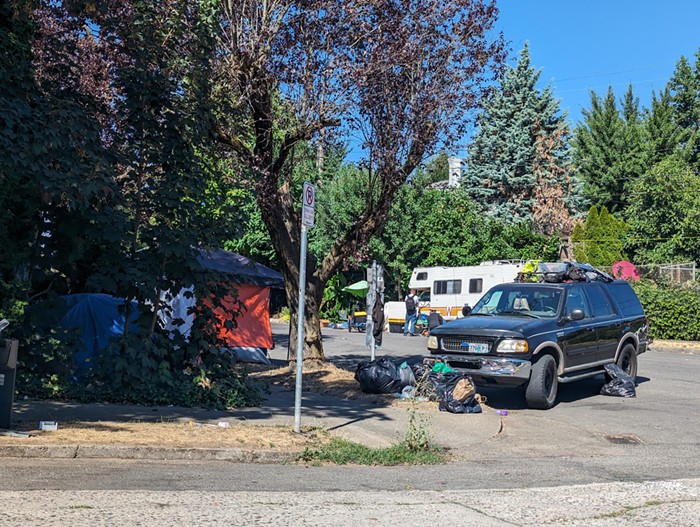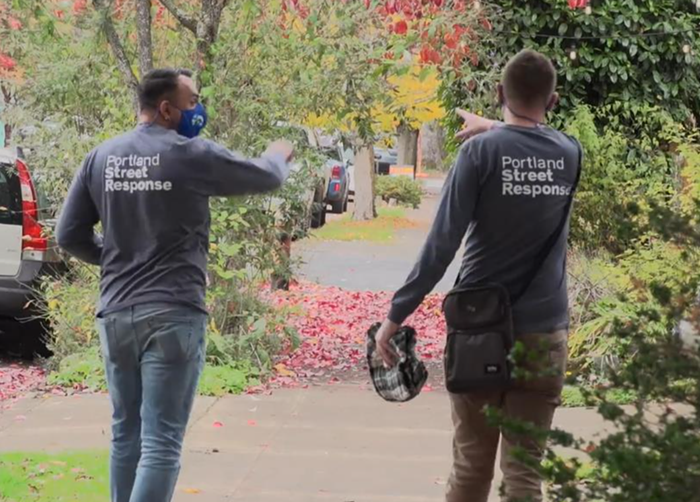
Some of the Portland metro area's poorest and most vulnerable Supplemental Nutritional Assistance Program (SNAP) benefit recipients could lose their food stamps in 2016.
In Multnomah and Washington counties, the Oregon Department of Human Services (DHS) is returning to a three-month limit on SNAP benefits for unemployed adults between 18 and 50 years old who aren't disabled or raising minor children. Most of those people will lose their benefits after three months, even if they're actively looking for work, though there are exemptions some recipients may qualify for.
This change is one of the harshest bits of the 1996 welfare reforms that limit most people who are considered an "Able-Bodied Adults Without Dependent" (ABAWD) to three months of food stamps within a 36-month period when they aren't employed or volunteering at least 20 hours per week, in a work training program, or going to school at least part time.
Oregon has had this provision waived since the early 2000s thanks to a sluggish economy, according to Belit Burke, the SNAP and Youth Services Programs Manager at DHS. Next year, thanks to a reduced unemployment rate, Multnomah and Washington counties are losing their exempted status. The rest of Oregon's counties' will still have the provision waived, Burke says.
Other people exempted from the three-month cutoff are high school students, pregnant women, those working more than 30 hours per week, people participating in a drug or alcohol treatment program, people receiving unemployment benefits, or people caring for a disabled person.
The loss of food assistance is going to hurt some of the area's most vulnerable: the indigent.
According to data from the US Department of Agriculture (USADA), many of the people subject to the three-month limit have an average income of about 19 percent of the poverty line (about $2,200 a year), and they typically receive no other income or nutrition support. Homeless people are especially at risk, according to a 2015 report from the Center on Budget and Policy Priorities.
"Everybody is pretty concerned because we want to keep people informed of their rights and let them know how to keep their SNAP benefits if they want to," Burke says. "We're working with advocate groups and food banks to do outreach to let people know about the changes."
In order to qualify for SNAP benefits, an applicant must provide a mailing address, Burke says, but many homeless folks offer a general delivery mailbox, making it harder for DHS to locate them and inform them of the upcoming changes.
Matt Newell-Ching, public affairs director at Partners for a Hunger-Free Oregon, says 25,000 Multnomah County residents and 7,000 Washington County residents were recently sent notices [PDF] about the upcoming changes because DHS thought those people might be affected by the three-month limit.
"This policy is particularly punitive for those who have been looking for work but have been struggling for a long time," he says. "And the loss of the waiver is tied to the unemployment rate, so it's great that we have more jobs available in the area, but it doesn't take into account other things, like the increased cost of housing in Washington and Multnomah counties."
Burke says that just being homeless doesn't automatically exempt someone from the three-month limit, but Newell-Ching says his organization is working with DHS to fix that. The USDA recently determined that people who are 'chronically' homeless should be exempt from the three-month time limit.
"What is the definition of 'chronic' anyway? Six months? One year?" Newell-Ching says. "This really lessens the ability of people who are trying to find work to be able to find work. If you can't eat, then how can you be in a position where you're able to perform well at a job interview? The policy affects certain people really disproportionately."
State agencies won't know exactly how this has affected the most vulnerable until at least a few months in to 2016, says Myrna Jensen with the Oregon Food Bank.
"We might not see any effects until mid-April or even mid-year when people start losing their benefits and we get more people needing meals at the food banks," she says. "We expect to see an increase in the number of people after April, and if that increase stays consistent over the next few months we'll be better able to trace it to a loss in SNAP benefits."
Jensen says that, statewide, Oregon Food Bank locations served at least 800,000 people at least one meal in 2015.
"We know our numbers spiked in 2009 and we know they haven't gone down since then, though they've maybe plateaued," she says. "This new change is coming at a really hard time of year when people don't need extra stress and we're working with DHS to keep everyone informed as well as we can about what they can do to keep their benefits."
[This post has been edited to note the exemptions available to certain SNAP benefit recipients]


















